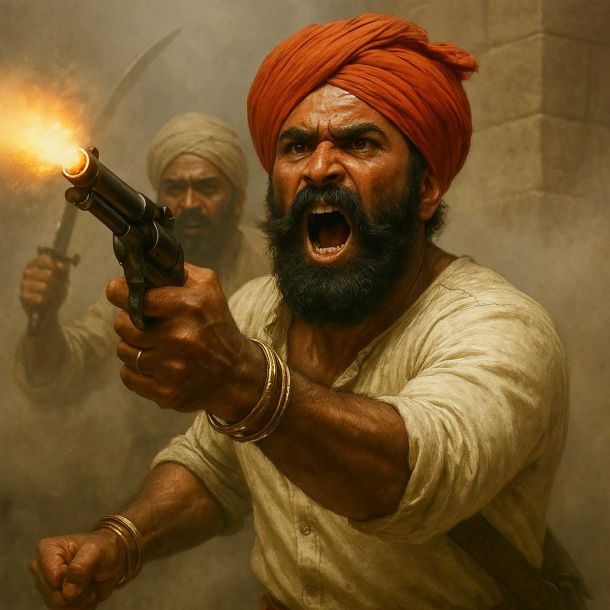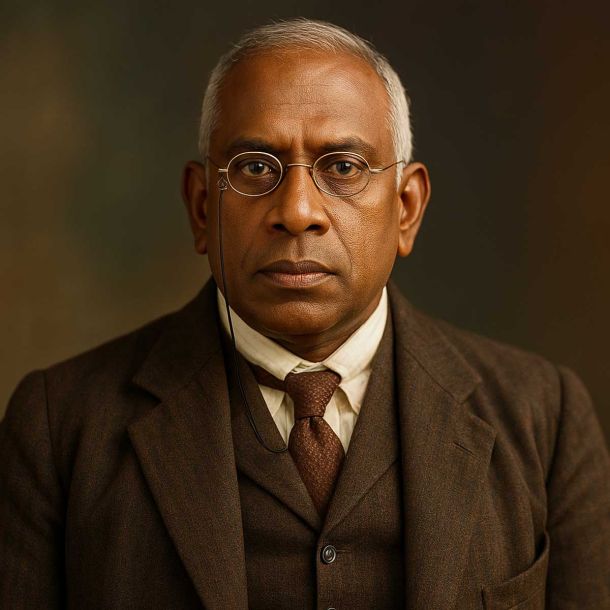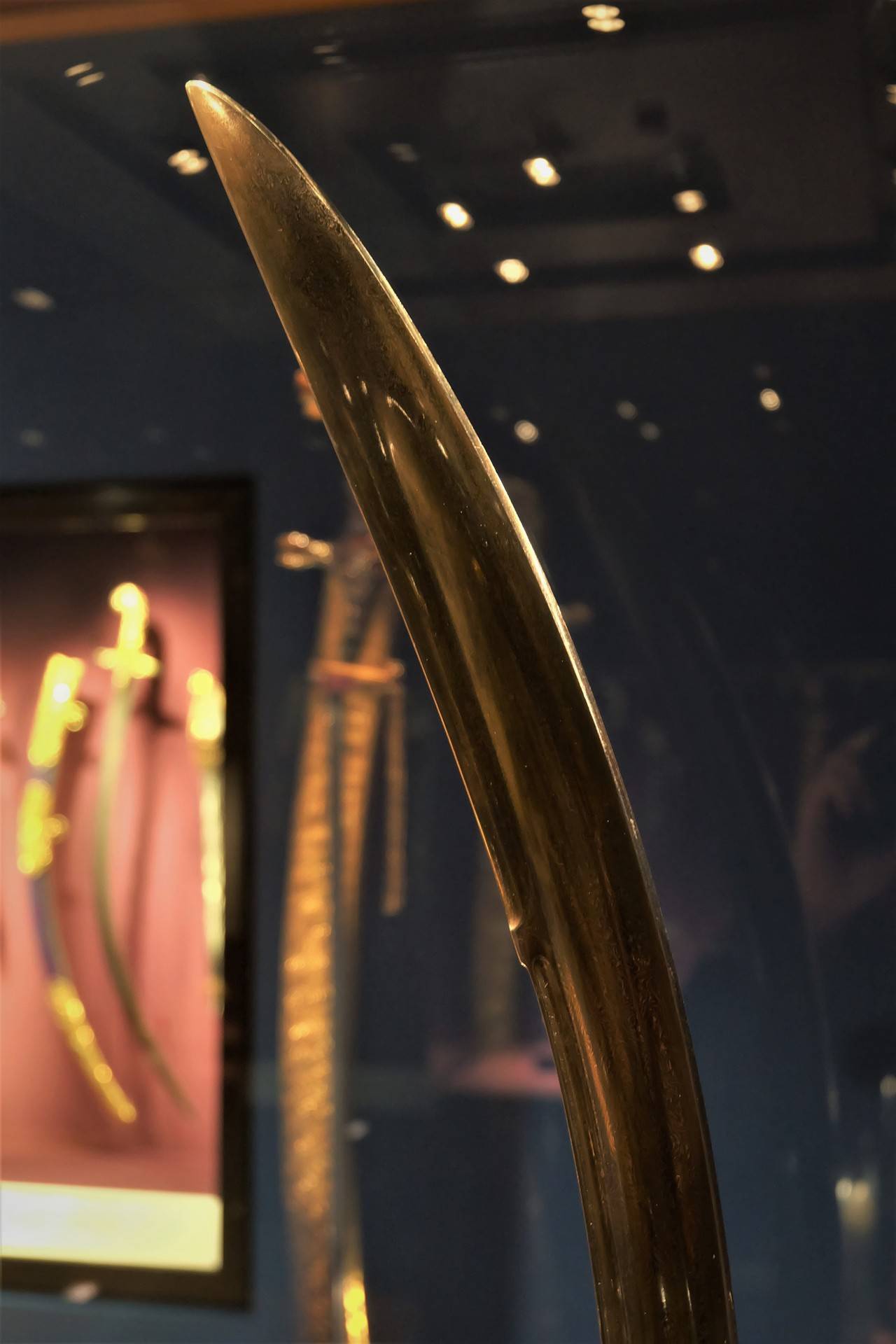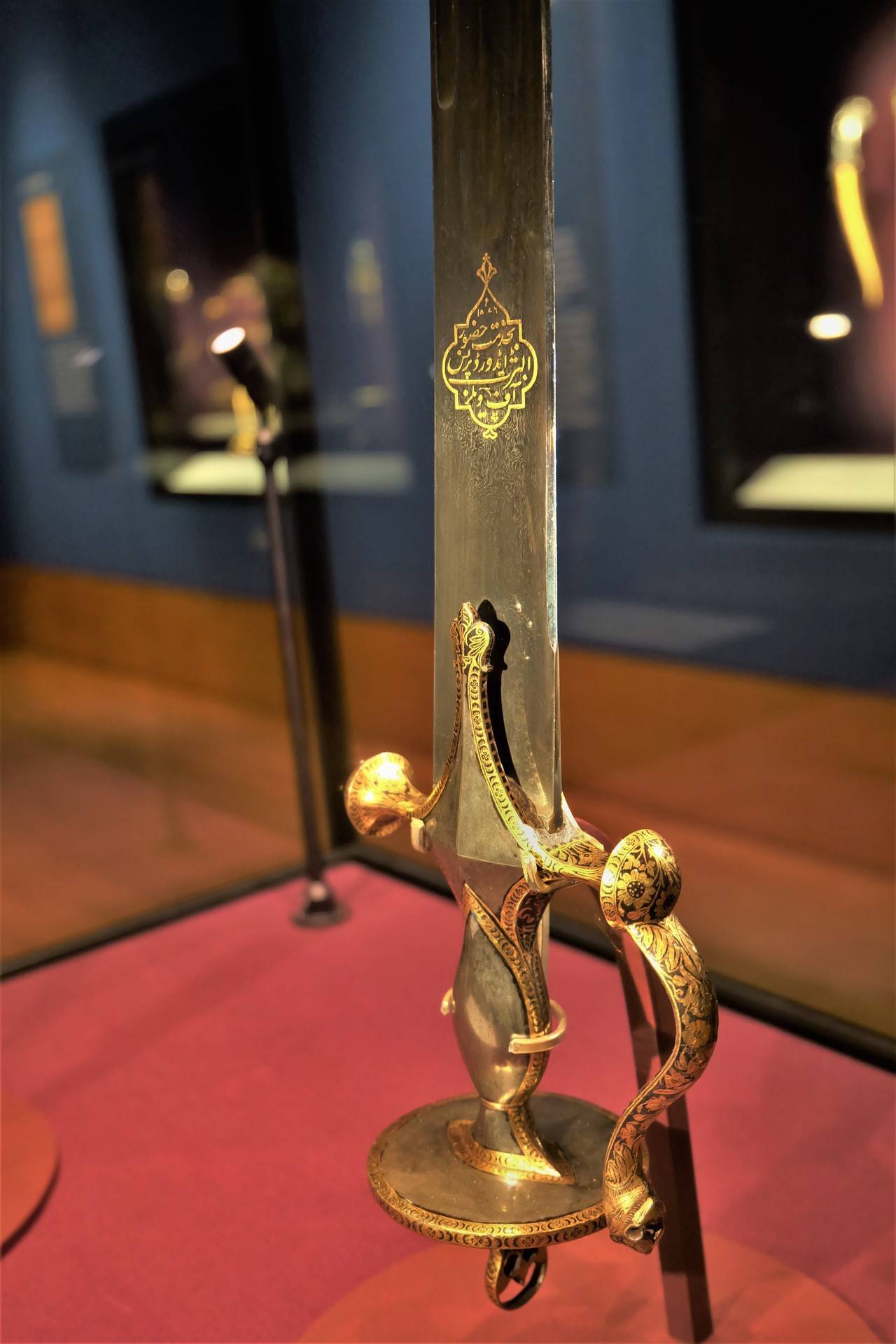MORE COVERAGE
Talwar from India dated to the Late 18th Century on display at the Queen’s Gallery in Edinburgh
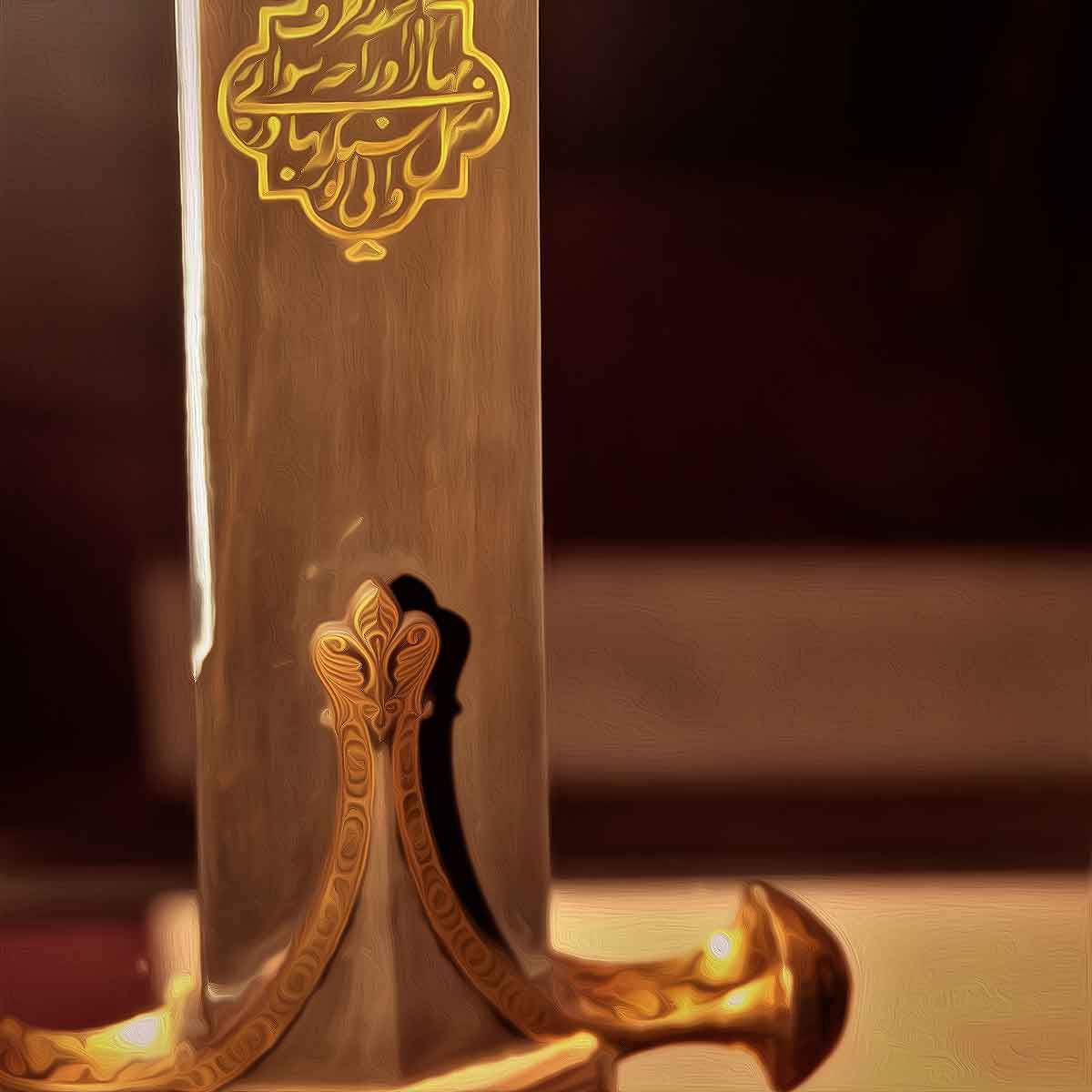
This talwar was forged entirely of watered crucible steel giving the blade a very fine dark watered pattern and it is inlaid with gold with a dedication in Persian to the Prince of Wales (Edward VII) from Maharaja Mangal Singh of Alwar and the name of the bladesmith, Muhammad Ibrahim.
The hilt forged with a knuckle guard in the form of a lion’s head is blued and overlaid with gold inscriptions in Persian and poppies and butterflies. The inscriptions on the hilt refer to a previous Maharaja of Alwar, Bakhtawar Singh (1779-1815), and to ’Zulfiqar’, the legendary sword that the Prophet Muhammed presented to his son-in-law, Ali ibn Ali Talib. The inscriptions suggest that the hilt predates the blade.
This sword is an exceptional example of watered crucible steel made by melting iron with carbon-rich vegetable material, such as leaves, in a crucible for a prolonged period. Then cooled into ingots that would be worked to form blades or hilts. This process of making steel not only resulted in an exceptionally sharp and strong blade but also created a fine rippling water-like pattern that was revealed by acid etching. This method is thought to have originated in South India and spread to other parts of the Indian subcontinent and Central Asia.
|
Photographs were taken by barbucomedie 2017
 Support Us
Support Us
Satyagraha was born from the heart of our land, with an undying aim to unveil the true essence of Bharat. It seeks to illuminate the hidden tales of our valiant freedom fighters and the rich chronicles that haven't yet sung their complete melody in the mainstream.
While platforms like NDTV and 'The Wire' effortlessly garner funds under the banner of safeguarding democracy, we at Satyagraha walk a different path. Our strength and resonance come from you. In this journey to weave a stronger Bharat, every little contribution amplifies our voice. Let's come together, contribute as you can, and champion the true spirit of our nation.
 |  |  |
| ICICI Bank of Satyaagrah | Razorpay Bank of Satyaagrah | PayPal Bank of Satyaagrah - For International Payments |
If all above doesn't work, then try the LINK below:
Please share the article on other platforms
DISCLAIMER: The author is solely responsible for the views expressed in this article. The author carries the responsibility for citing and/or licensing of images utilized within the text. The website also frequently uses non-commercial images for representational purposes only in line with the article. We are not responsible for the authenticity of such images. If some images have a copyright issue, we request the person/entity to contact us at This email address is being protected from spambots. You need JavaScript enabled to view it. and we will take the necessary actions to resolve the issue.
Related Articles
- Top of broken pillar in foreground with the famous Sarnath lion capital standing on the ground beyond - 1905
- "ॐ त्रयम्बके यजामहे सुगंधि पुष्टिवर्धनम उर्वारुक्मिव बन्धनान मृत्योमुर्क्षीय मार्मतात्!!!": Rudra, the Wild God; a hunter with his arrow - One face of the ekamukhalinga, directed toward the door, stands for the four visible faces, total presence of Shiva
- "Return to the root and you will find the meaning": Silver rhyton discovered at Deylaman, Iran, inscription & leading art historians identify the artifact as representing Durga Mahishasuramardini, a new insight into high-quality production of silver icons
- Close view of sculpture of Kurmavatara (tortoise incarnation of Vishnu), Garhwa, Allahabad District - 1875
- The Goddess Durga Slaying the Demon Buffalo Mahishasura - 12th century | India (Himachal Pradesh, probably Chamba Valley)
- "Every relic of the past is a link to the echoes of history": Unearthing a 2,300-year-old elephant statue in Odisha's Puri, opens a time portal to Emperor Ashoka's era, illuminating the influence of Buddhism and its profound symbolism in ancient India
- Details of carvings at the Prasanna Chennakesava temple, Somnathpur - 1895
- "Secret underground library of Rajasthan": With 900,000 books Rajasthan hides deep in the Thar desert, one of Asia's biggest libraries as a unique treasure trove with a capacity to seat 5000 people at once, built by Bhadariya Maharaj (saint)
- "Rare Amrita Sher-Gil portrait sells for record $2.92 million": Born in Budapest to an Indian Sikh father and Hungarian mother, Amrita Sher-Gil painted the portrait in 1932 when she was 19, setting a new record for an Indian woman artist


